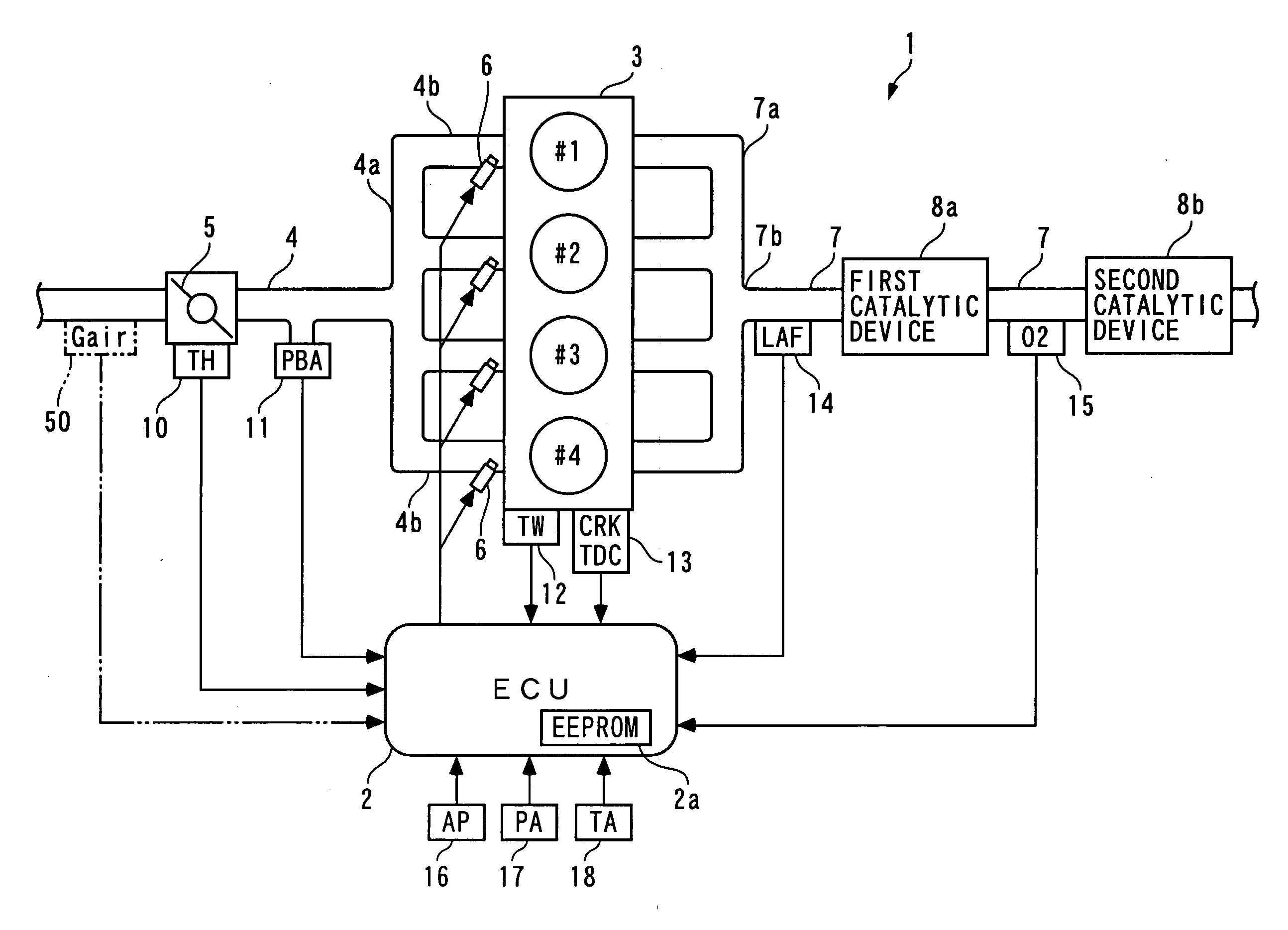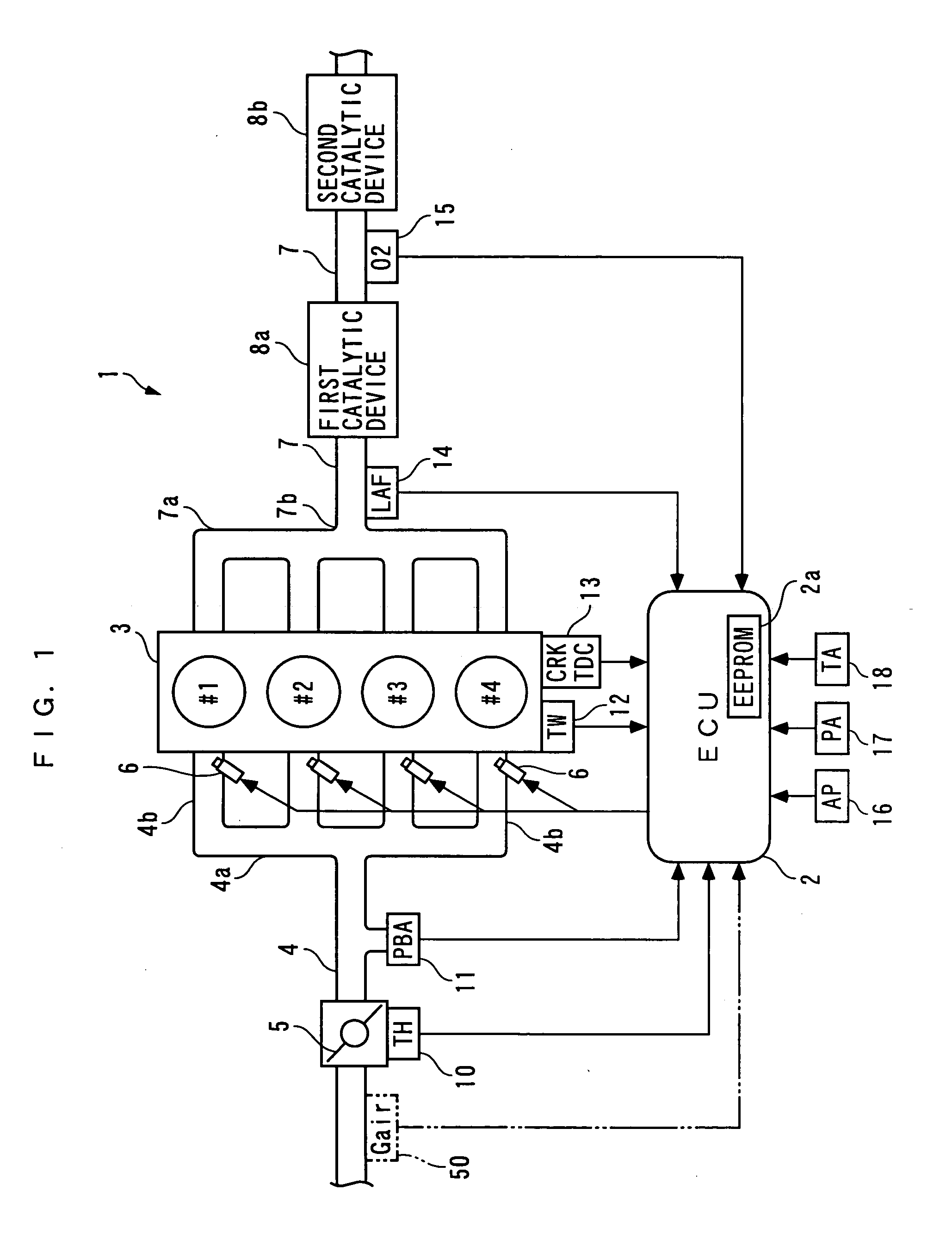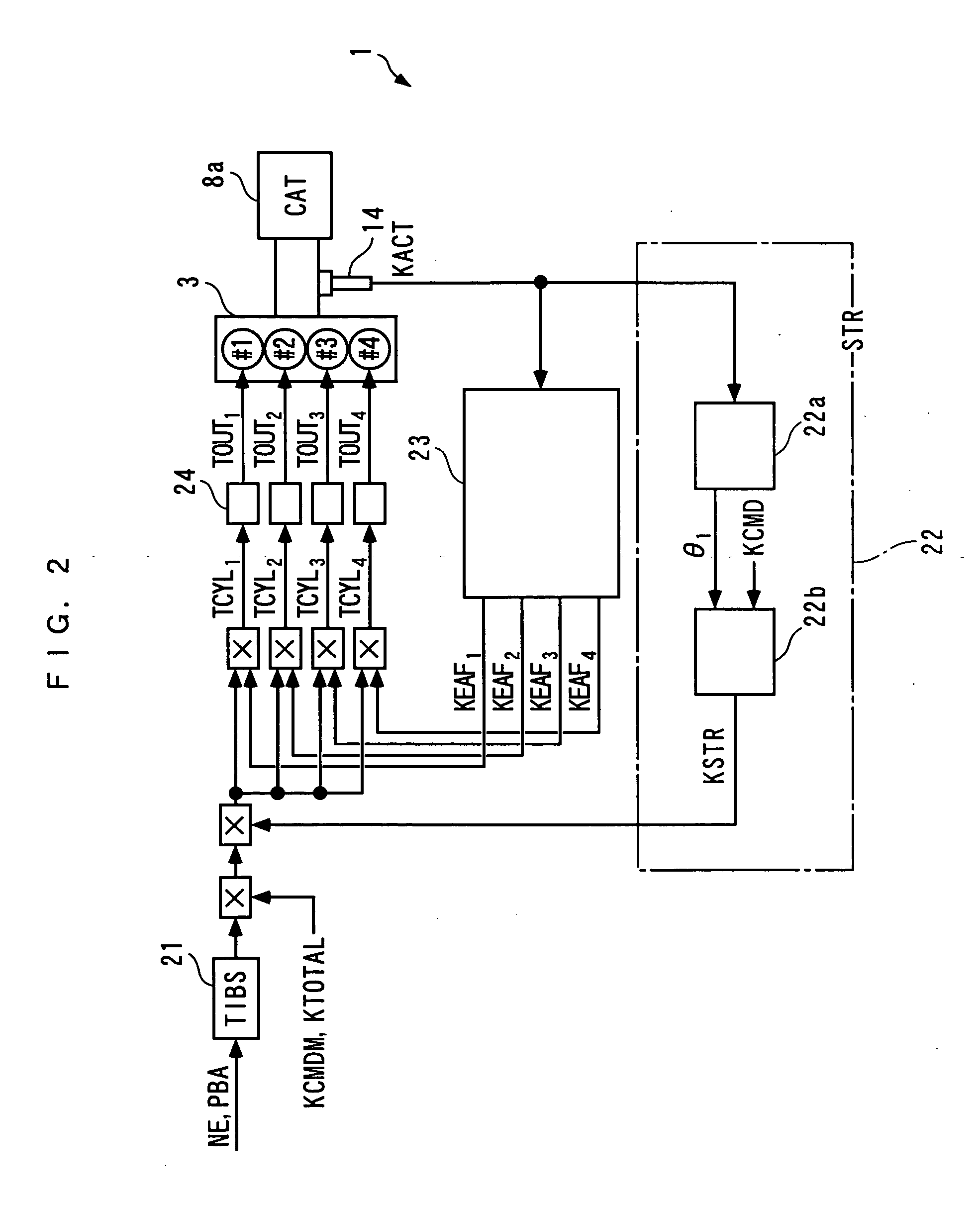Air-fuel ratio control system and method for an internal combustion engine, and engine control unit
a technology of air-fuel ratio and control system, which is applied in the direction of electrical control, process and machine control, instruments, etc., can solve the problems of reducing the air-fuel ratio of a three-way catalyst, increasing the harmful substances in the exhaust gas emitted into the air, and taking a long time for the oxygen concentration of exhaust gas from all the cylinders to converge, so as to quickly and properly eliminate the variation in air-fuel ratio
- Summary
- Abstract
- Description
- Claims
- Application Information
AI Technical Summary
Benefits of technology
Problems solved by technology
Method used
Image
Examples
first embodiment
[0249] The reason why the variation correction coefficient KEAFi is thus calculated based on the sum of the first and second filtered values KACT_Fc and KACT_Fr (step 90, 93 to 95) is as follows: As shown in FIG. 28, when the aforementioned simulative outputs KACTMI are input to the variation correction section 30 as the output KACT from the LAF sensor 14, with the third simulative output KACTMI3 alone being made smaller than the others, the first filtered value KACT_Fc changes with a relatively large amplitude, and the second filtered value KACT_Fr changes with a relatively small amplitude. In comparison with the first filtered value KACT_Fc indicated by a broken line in FIG. 28, the sum of the filtered values (KACT_Fc+KACT_Fr) becomes a negative value larger in its absolute value at the time of the third simulative output KACTMI3 being input, and becomes a smaller positive value at the time of the second simulative output KACTMI2 being input. As is apparent from this comparison, t...
second embodiment
[0258] As described above, the cylinder-by-cylinder variation correction coefficient KEAFi is calculated based on the sum of the first and second filtered values KACT_Fc and KACT_Fr, which exhibits a characteristic closer to actual variation in air-fuel ratio between the cylinders, such that the air-fuel ratios associated with the four cylinders #1 to #4 are leveled off, i.e. such that the sum of the first and second filtered values KACT_Fc and KACT_Fr becomes equal to 0. Therefore, variation in air-fuel ratio between the cylinders can be eliminated more quickly and properly.
[0259] It should be noted that when the absolute value |KACT-Fi (n)| of the calculating filtered value is smaller than the threshold value KACT_THRESH, the variation correction coefficient KEAFi may be fixedly held at its immediately preceding value, as in the variation of the first embodiment, without calculating the variation correction coefficient KEAFi.
[0260] Next, a third embodiment of the present inventi...
PUM
 Login to View More
Login to View More Abstract
Description
Claims
Application Information
 Login to View More
Login to View More - R&D
- Intellectual Property
- Life Sciences
- Materials
- Tech Scout
- Unparalleled Data Quality
- Higher Quality Content
- 60% Fewer Hallucinations
Browse by: Latest US Patents, China's latest patents, Technical Efficacy Thesaurus, Application Domain, Technology Topic, Popular Technical Reports.
© 2025 PatSnap. All rights reserved.Legal|Privacy policy|Modern Slavery Act Transparency Statement|Sitemap|About US| Contact US: help@patsnap.com



